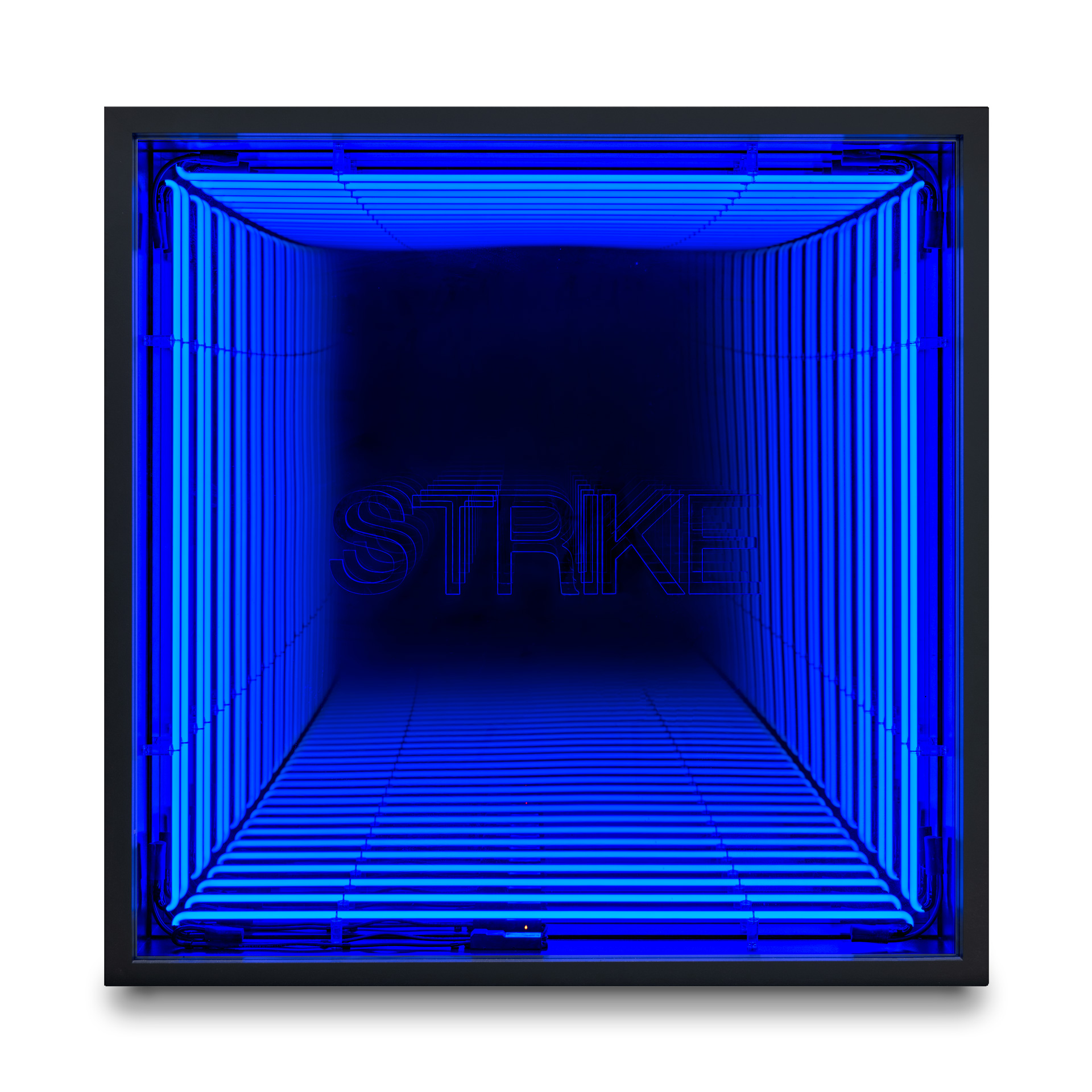The main working material of this Chilean artist, who grew up during the dictatorship of Augusto Pinochet, is something as simple and commonplace in almost every home as electric light. In that period, power cuts were commonly used to control the population during curfew. This was the origin of Navarro’s interest in working with neon lights, in what are perhaps his most characteristic pieces, which are also rich in political content and social criticism.
In the early 2000s, Navarro became famous for his chairs made from fluorescent tubes which somehow evoked both the electric chairs with which some prisoners are still executed in the United States and the torture practices used during the dictatorship of Augusto Pinochet in Chile.
In many of these works Navarro incorporated a series of mirrors, creating an optical effect by which we see never-ending tunnels or shafts. This brought him close to the tradition of op art which had emerged in the 1960s and was cultivated in its day by Latin American artists such as Cruz-Diez and Soto.
The artist himself explains the use of electric light in his work as follows: “I regularly use colourless light in many of the works to maintain the starkness of the material. Colour appears when there is a specific meaning in relation to the significance of colour. The fluorescent tube is more accessible, more efficient and sometimes unstable. You can find it in every corner of the world. For this reason I see it as more connected to the domestic world. Neon, on the other hand, has been connected since its invention with attracting the public’s attention, promoting services. Every luminous object has well-defined functions in society.”1
Iván Navarro represented Chile at the 53rd Venice Biennale and his works are present in numerous collections, including the Fonds National d’Art Contemporain in Paris, the LVMH Collection, the Hirshhorn Museum and Sculpture Garden, Inhotim, the Museum of Fine Arts, Boston, the National Museum of Modern and Contemporary Art, Korea (MMCA) and the Zabludowicz Collection. He has lived and worked in New York since 1997.
The Hortensia Herrero collection includes a work by Iván Navarro in which he uses light and a mirror as the main materials with which to construct a work that deceives our eye and leads us to an endless tunnel.
